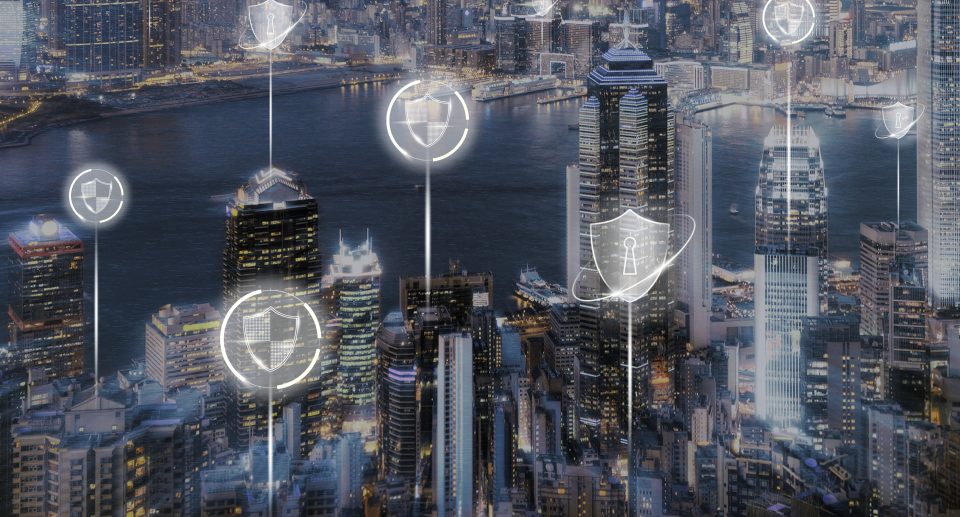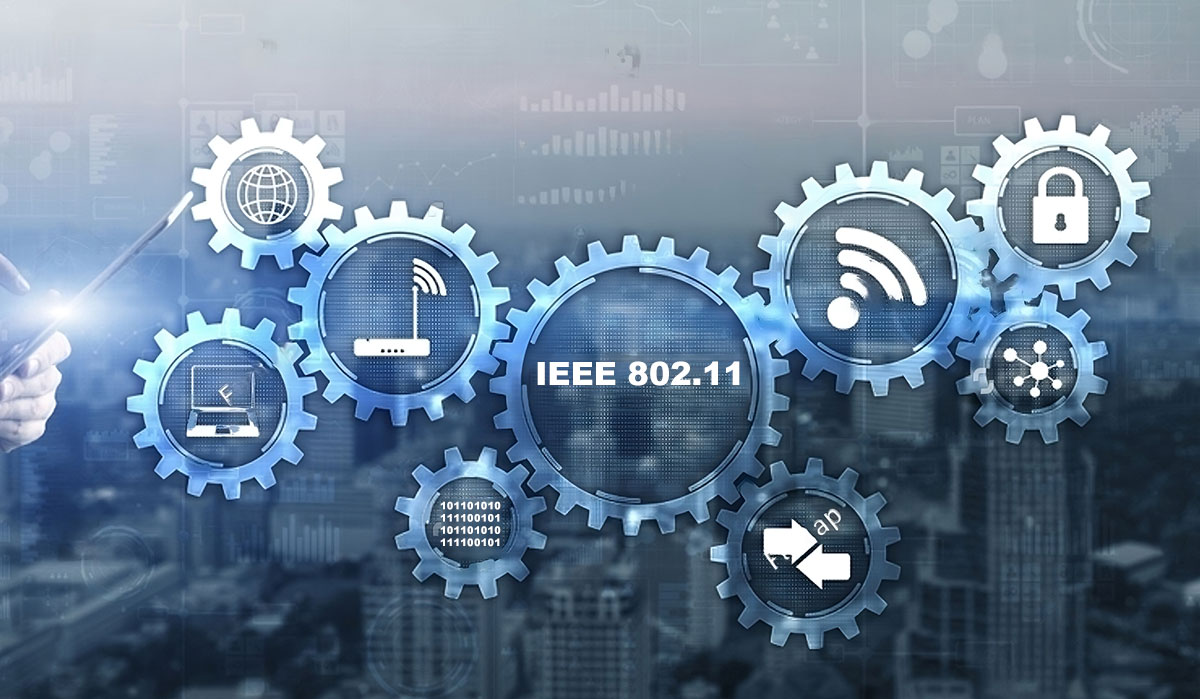EZELINK’s Pioneering Role in Shaping the Future of Secure Networking in the UAE, KSA, and Oman

As cybersecurity landscapes undergo transformative shifts, EZELINK stands at the forefront of innovation, aligning with market trends and emerging technologies. This article delves into key industry insights, highlighting the growing significance of Secure Access Service Edge (SASE) in the UAE, KSA, and Oman.
Discover how EZELINK is revolutionizing secure networking in the UAE, KSA, and Oman amidst the evolving cybersecurity market. Explore insights on SASE, zero trust, and multi-cloud networking convergence, with a focus on consolidation, cost optimization, and the remote-access undercurrent shaping the industry.
Key Insights:
- SASE Market Dynamics:
- SASE market in its early stages, indicating a long-term shift toward consolidating distributed cloud security.
- EZELINK is strategically positioned to capitalize on this shift, providing cutting-edge solutions that align with the evolving needs of cybersecurity professionals.
- Cybersecurity Market Trends:
- Market reports suggest a slowdown in the cybersecurity sector, with CEOs referencing enterprise slowdown and deal movement concerns.
- EZELINK adapts to market dynamics, anticipating a 20-30% annual slowdown in enterprise cybersecurity, driven by cost optimization, with strategies extending into the first half of 2024.
- Convergence of Technologies:
- SASE, zero trust, and multicloud networking technologies are converging, marking a pivotal moment in the industry.
- EZELINK recognizes and embraces this convergence, driving the integration of networking, zero trust security, and cloud security to optimize costs and enhance overall security effectiveness.
- Continued Consolidation:
- Large-scale acquisitions in SASE areas, including Cloud Access Security Broker (CASB) and Zero Trust Network Access (ZTNA), are indicative of a trend toward consolidation.
- EZELINK remains at the forefront of industry consolidation, leveraging its expertise to integrate best-of-breed security functions into its SASE portfolios.
- Remote Access and WFH Impact:
- Remote access and work-from-home (WFH) trends continue to influence the SASE market, driving the adoption of cloud-based and network-based security.
- EZELINK addresses this undercurrent, offering Network-as-a-Service (NaaS) and Content Delivery Network (CDN) solutions with integrated security services.
- SASE Market Potential:
- The addressable market for SASE is estimated to be in the tens of billions of dollars, presenting substantial opportunities for integration and market leadership.
- EZELINK positions itself as a key player in unlocking this potential, providing comprehensive solutions that enhance security, enable secure cloud access, and replace traditional Virtual Private Networks (VPNs).
- Leading Industry Players:
- Companies such as Akamai, Cisco, Palo Alto Networks, and Zscaler are prominent players in the SASE landscape.
- EZELINK’s strategic positioning aligns with these industry leaders, ensuring a strong presence and contributing to the continuous evolution of secure networking in the region.
As technology evolves, so does the landscape of network security. EZELINK, a key player in the UAE, KSA, and Oman, embraces the future with Secure Access Service Edge (SASE), a revolutionary approach that integrates network-based security and cloud-based services. In this article, we explore how EZELINK navigates the complexities of the SASE market, delivering cutting-edge solutions in simple terms.
- SASE’s Evolution from SD-WAN:
- SASE emerged from the SD-WAN movement, simplifying WAN connectivity management for organizations with branches.
- EZELINK positions itself at the forefront of this evolution, providing seamless integration and management of network services.
- SASE’s Success and Complexity:
- SASE has been successful but complex, offering services through SaaS or NaaS models.
- EZELINK adapts to the complexity, ensuring a user-friendly experience for enterprises, whether they choose pre-built services or prefer building their own network services.
- Visibility, Analytics, and Automation:
- SASE focuses on enhancing network visibility, analytics, and automation, mirroring the evolution from SD-WAN.
- EZELINK emphasizes the importance of these elements, aligning with the industry’s drive toward more intelligent, secure, and automated networks.
- Market Dynamics and Consolidation:
- The SASE market experiences growth with an increasing number of vendors offering diverse security services.
- EZELINK anticipates future consolidation and integration in the SASE market, providing end users with efficient and integrated security solutions.
- Distributed Cloud and Network Security Trends:
- Data and trends suggest that distributed cloud and network security will be prominent themes in 2024.
- EZELINK prepares for this trend, anticipating the need for more effective security measures while consolidating technologies and tools.
- Security Challenges Driving Network Integration:
- The surge in cloud services and applications demands improved visibility and security across the network.
- Internet-based services and hybrid workforces necessitate new network security architectures.
- EZELINK addresses these challenges by leveraging the network for enhanced security, ensuring protection across every network interconnection point.
In the fast-paced world of cybersecurity, EZELINK takes the lead in unraveling the intricacies of distributed enterprise security needs, cloud architecture integration, and the ongoing SASE vs. SSE debate. Let’s delve into the wealth of information garnered from extensive surveys conducted throughout 2023, providing a comprehensive understanding of the contemporary cybersecurity landscape.
Understanding Distributed Enterprise Security Needs
Surveying 196 enterprise IT and security managers in 2023 revealed a resounding trend favoring the utilization of networking tools for enhanced traffic visibility, security, and governance. A staggering 98% of respondents endorsed the benefits of merging SD-WAN with security services through SASE and SSE at the edge, showcasing a clear inclination towards integrated solutions.
Addressing Internet and Cloud Security Needs
As organizations adapt to hybrid cloud architectures, EZELINK recognizes the pivotal role of multi-cloud networks. A significant 78% of surveyed professionals believe that multi-cloud networking will play a vital role in simplifying or accelerating the adoption of hybrid cloud and multi-cloud environments, emphasizing the importance of a versatile and integrated approach.
Adapting to Shifting Work Dynamics
The paradigm shift towards hybrid and remote work necessitates a nuanced approach. Survey results from 2023 indicate that 66% of organizations already have immediate plans or capabilities for hybrid work scenarios. An additional 32% are gearing up to roll out hybrid capabilities over the next 6-12 months, underlining the urgency of adapting to diverse work environments.
Key Functions Driving SASE Integration
EZELINK recognizes the increasing demands on networking teams in the current landscape. As organizations grapple with overwhelming tools and tasks, the call for consolidation into more robust platforms becomes apparent. SASE emerges as a solution, consolidating and integrating various cybersecurity and network functions to meet the complex requirements of modern enterprises.
Decoding SASE vs. SSE Debate
Delving into the SASE vs. SSE debate, EZELINK provides clarity on the cloud-hosted model versus the balance of cloud and on-premises architectures. While SSE focuses on a cloud-delivered approach, SASE embraces a distributed architecture, encompassing on-premises devices, networking, and cloud-hosted software. The distinction, EZELINK argues, hinges on the inclusion of SD-WAN functionality.
EZELINK’s Perspective on SASE’s Future
As a firm believer in the future growth of SASE, EZELINK aligns with the view that SASE represents a consolidation and integration of network and cloud-hosted security services. The surge in cybersecurity and networking requirements in a cloud-centric world propels the continual expansion of SASE use cases.
Anticipating SASE Growth in 2024
Looking ahead to 2024, EZELINK outlines several key use cases and applications driving the growth of SASE. These include addressing the needs of a hybrid workforce, ensuring compliance with evolving remote-work policies, enabling multitenancy for managed services, providing security for edge IoT applications, and promoting ZTNA/SDP adoption.
The dynamic realm of cybersecurity has witnessed significant mergers and acquisitions, unveiling the growing demand for Cloud Access Security Broker (CASB) functionality. Esteemed names such as Cisco, Forcepoint, McAfee Enterprise, Microsoft, Palo Alto Networks, and Proofpoint have strategically integrated acquired CASB technology into their expansive security portfolios. This trend underscores the industry’s acknowledgment of the pivotal role CASB plays in modern cybersecurity.
MPLS Replacement and SASE Market Evolution
The evolution of the Secure Access Service Edge (SASE) market stems from the expansion of the Software-Defined Wide Area Network (SD-WAN) into software-delivered network security functions. Initially, SD-WAN’s high-value use case was to secure private IP and Internet circuits as a cost-effective replacement for Multiprotocol Label Switching (MPLS) services. This breakthrough resonated with enterprises, fueling the rapid growth of the SASE market.
Key Use Cases Bundled in SASE Value Proposition
Beyond MPLS replacement, the SASE value proposition encompasses various key use cases. The challenge now is not merely connecting a fixed set of people, devices, and resources but dynamically linking an evolving mix of elements that might not reside in any permanently fixed physical location. This shift has necessitated a reevaluation of traditional networking and security approaches, prompting a move towards more integrated, cloud-centric tools.
SASE as a Consolidation Movement
SASE emerges as part of a broader movement, consolidating technology tools and integrating them with cloud architectures. This integration aims to achieve complete visibility, control, and compliance of the entire cloud infrastructure. In this context, EZELINK foresees the growing importance of SASE use cases in response to the escalating requirements for cybersecurity and networking in a cloud-dominated world.
Strategies of Leading SASE Providers
Examining recent strategies, major players in networking and firewall security markets are actively involved in the SASE market. These providers continuously evolve their service portfolios to meet the demands of the distributed, multicloud, and hybrid access landscape. At the core, SASE technologies function as platforms leveraging a suite of cloud-based security capabilities alongside Customer Premises Equipment (CPE).
Key Differentiators in SASE Architecture
Several essential differentiators characterize the SASE architecture, including integration with the SD-WAN footprint, distributed policy enforcement and inspection, an identity-focused approach, context awareness, and a cloud-native security architecture. These attributes ensure that SASE remains at the forefront of innovation, addressing the complexities of modern cybersecurity challenges.
Diverse SASE Architectural Approaches
The SASE architecture accommodates various approaches, broadly categorized into three buckets. The cloud-hosted approach, embraced by cybersecurity players targets the SMB market with a focus on scalability and ease of consumption. On the other hand, the on-premises and “single-vendor SASE” approach sees traditional vendors extending from on-premises hardware to cloud functionality.
Managed Network Approach
EZELINK with its private routed layer-3 network services focus on providing secure network services to enterprises and organizations. This managed network model differentiates itself from the vendor model, emphasizing a platform for organizations to build their networks and services.
SASE Companies Battle for Mindshare
The SASE landscape is marked by intense competition as large networking and security vendors strive to add scale and functionality. The industry’s largest players are actively engaging in mergers and acquisitions to enhance their offerings, reflecting the game of scale and integration in the SASE space.
Conclusion
As the SASE architecture continues to evolve, organizations must stay vigilant and align with providers whose approaches resonate with their specific use cases. The intricate tapestry of SASE is woven by a diverse array of strategies, each catering to the unique needs of enterprises navigating the multifaceted cybersecurity landscape.













